Balkinization
an unanticipated consequence of
Jack M. Balkin
Balkinization Symposiums: A Continuing List
E-mail:
Jack Balkin:
jackbalkin at yahoo.com
Bruce Ackerman
bruce.ackerman at yale.edu
Ian Ayres
ian.ayres at yale.edu
Corey Brettschneider
corey_brettschneider at brown.edu
Mary Dudziak
mary.l.dudziak at emory.edu
Joey Fishkin
joey.fishkin at gmail.com
Heather Gerken heather.gerken at yale.edu
Abbe Gluck abbe.gluck at yale.edu
Mark Graber
mgraber at law.umaryland.edu
Stephen Griffin
sgriffin at tulane.edu
Jonathan Hafetz
jonathan.hafetz at shu.edu
Jeremy Kessler
jkessler at law.columbia.edu
Andrew Koppelman
akoppelman at law.northwestern.edu
Marty Lederman
msl46 at law.georgetown.edu
Sanford Levinson
slevinson at law.utexas.edu
David Luban
david.luban at gmail.com
Gerard Magliocca
gmaglioc at iupui.edu
Jason Mazzone
mazzonej at illinois.edu
Linda McClain
lmcclain at bu.edu
John Mikhail
mikhail at law.georgetown.edu
Frank Pasquale
pasquale.frank at gmail.com
Nate Persily
npersily at gmail.com
Michael Stokes Paulsen
michaelstokespaulsen at gmail.com
Deborah Pearlstein
dpearlst at yu.edu
Rick Pildes
rick.pildes at nyu.edu
David Pozen
dpozen at law.columbia.edu
Richard Primus
raprimus at umich.edu
K. Sabeel Rahmansabeel.rahman at brooklaw.edu
Alice Ristroph
alice.ristroph at shu.edu
Neil Siegel
siegel at law.duke.edu
David Super
david.super at law.georgetown.edu
Brian Tamanaha
btamanaha at wulaw.wustl.edu
Nelson Tebbe
nelson.tebbe at brooklaw.edu
Mark Tushnet
mtushnet at law.harvard.edu
Adam Winkler
winkler at ucla.edu
Compendium of posts on Hobby Lobby and related cases
The Anti-Torture Memos: Balkinization Posts on Torture, Interrogation, Detention, War Powers, and OLC
The Anti-Torture Memos (arranged by topic)
Recent Posts
Regulation by Deal Comes to Higher Ed
Just A Few Blogs
ACS Blog
Alas, a Blog
Althouse
Arts and Letters Daily
Atrios (Eschaton)
Bill of Health
Buzzflash.com
Buzz Machine
Cato at Liberty
Juan Cole (Informed Comment)
Concurring Opinions
The Constitution in 2020
Corrente
Crooked Timber
Daily Howler
Daily Kos
Dana Boyd
Brad DeLong
Digby (Hullabaloo)
Discriminations
Daniel Drezner
Kevin Drum (Mother Jones)
Electrolite
En Banc
Eunomia (Daniel Larison)
Fafblog
Michael Froomkin (Discourse.net)
GovLab (Beth Noveck)
Rick Hasen (Election Law)
History News Network
How Appealing
Ignatz (Sam Heldman)
The Importance of (Ernie Miller)
Infolaw
Instapundit
International Economic Law and Policy Blog
IntLawGrrls
Jacob Levy
Jesus' General
Jurisdynamics
The Kitchen Cabinet
Mark Kleiman
Law Blog Central
Larry Lessig
Lawyers, Guns and Money
Liberal Oasis
Brian Leiter's Law School Reports
The Leiter Reports
Marginal Revolution
Megan McArdle
Memeorandum
Metafilter
Mirror of Justice
The New Republic
Newseum
No More Mister Nice Blog
Brendan Nyhan
Opinio Juris
Orcinus
The Originalism Blog
Pandagon
Passport (Foreign Policy)
Overcoming Bias
Political Animal (Washington Monthly)
Political Theory Daily Review
Political Wire (Taegan Goddard)
The Poor Man
Virginia Postrel
Prawfsblawg
Public Reason
Jonathan Rauch
Raw Story
Redstate
ReligiousLeftLaw.com
Reporters Committee For Freedom of the Press
Reproductive Rights Blog
Rothman's Roadmap to the Right of Publicity
SCOTUS Blog
Seeing the Forest
Clay Shirky
The Shifted Librarian
The Situationist
Larry Solum (Legal Theory)
Andrew Sullivan
Talking Points Memo
Talk Left
Tapped
Tbogg
TechPresident
The Paper Chase (Jurist)
Tom Paine
Tom Tomorrow (This Modern World)
Eve Tushnet
Uggabugga
University of Chicago Law School Faculty Blog
Unqualified Offerings
The Volokh Conspiracy
War and Piece (Laura Rozen)
Wampum
Oliver Willis
Wonkette
Written Description
Matthew Yglesias
Yin
Your Choice of Feeds
1. XML
powered by
2. Atom Feed
3. RSS 2.0
Wednesday, July 23, 2025
Regulation by Deal Comes to Higher Ed
David Pozen
Earlier this evening, Columbia
University announced an agreement with the Trump administration in
which Columbia makes a host of concessions in order to restore its eligibility for
federal funding. The agreement is already being described as “unprecedented,” “the first of
its kind.” These
descriptions are true but ambiguous, because the agreement breaks new ground on
any number of levels. For instance, the agreement marks
the first time that antisemitism and DEI have been invoked as the basis for a
government-enforced restructuring of a private university. The agreement was engineered
by a novel collaboration among the Department of Education,
the Department of Health and Human Services, the General Services
Administration, and the White House, which pooled their resources to ratchet up
the pressure on Columbia (with some help on the side from the Department of Justice). The
agreement is also the first to require a university to fork over money to the
government as a condition of receiving money from the government, bringing a
new brand of pay-to-play into the world of scientific and medical research. And let’s not forget that the
agreement grows out of the executive branch’s first-ever cutoff of congressionally
appropriated funds to a university, so as to punish that university and impel
it to adopt sweeping reforms, without any pretense of following the congressionally
mandated procedures. Lawyers have been debating the exact circumstances under
which the executive branch may freeze particular grants and contracts to
particular schools. Yet as far as I’m aware, no lawyer outside the government
has even attempted to defend the legality of the initial cutoff that brought
Columbia to its knees and, thereafter, to the “negotiating” table. In short, the agreement gives legal
form to an extortion scheme—the first of its kind!—that defies the relevant
statutes as well as the constitutional separation of powers and the First
Amendment. There is another unprecedented feature
of the situation that is so obvious it is easy to overlook, and that might
ultimately prove the most consequential of all: the way in which the federal
government is seeking to reshape the internal operations of universities not
through generally applicable directives, but rather through a series of bilateral
“deals.” The Trump administration has made clear that while Columbia is first in
line, it intends to reach comparable agreements with other schools—to scale the
Columbia shakedown into a broader model of managing universities deemed too
woke. As has already occurred with law firms, tariffs, and trade policy, regulation
by deal is coming to higher education. * * * Recent years have seen fierce debates over how universities should be
regulated when it comes to matters of discrimination. The traditional paradigm
is that Congress passes civil rights laws; the Department of Education
promulgates rules, following a process of public notice and comment, to
implement these laws; and the department then seeks to ensure compliance. Under
President Obama, the executive branch began to rely more on Dear Colleague
Letters and other informal policy statements, and less on notice-and-comment
rulemaking, to promote its vision of antidiscrimination. Many commentators on
the right cried foul. By 2024, they were joined by a growing chorus on the left,
including some who accused the Biden administration of utilizing “subregulatory
guidance” to undermine pro-Palestinian protests. Without any clear grounding in the
civil rights statutes themselves, the Trump administration has begun to effect another,
more dramatic regulatory shift—away from guidance documents addressed to the
entire sector, and toward bespoke deals foisted upon individual schools after summarily
terminating or threatening their federal funds. It is important to emphasize
that this shift does not reflect an increased interest in enforcement, leading
to an increased number of consent decrees or out-of-court settlements. These
deals will not be the product of thorough investigations or judicial findings
of misconduct by the schools in question. No established legal process was followed
for the Columbia agreement; no genuine legal dispute was resolved. The
dealmaking is the main regulatory event from start to finish. This emerging model raises profound
concerns not just for universities’ budgets and independence but also for the
rule of law. By relying on “particular transactions to effectuate government
policy,” scholars have observed in other contexts, regulation
by deal bypasses all of the “notice, comments, [and] due process standards that
we ordinarily expect from public administration.” While guidance documents may
share some of these deficits, they are not actually binding on regulated parties and at least
aspire to uphold bedrock legal principles of “generality, clarity,
publicity, stability, and prospectivity.” The style of regulation reflected in
the Columbia deal is at once far more coercive and far more arbitrary—opaque in
development, unpredictable in application, deeply susceptible to personalism
and corruption, and only contingently connected to the laws Congress has
written. As compared to the familiar fare of public administration, “one-off dealmaking is more about
back-door terms, forceful results, and unequal application of standards, to the
extent standards exist at all.” Regulation by deal may have a
useful role to play under certain conditions. For example, the executive might
have an urgent need to partner with particular entities, legislative
authorization to do so, and good cause to believe that the unpredictability of
dealmaking will reduce moral hazard or enhance legal compliance. The financial
crisis of 2007–2008 arguably satisfied these conditions. Whatever
one thinks about Columbia or elite universities more generally, the current
campus imbroglios plainly do not. The spread of regulation by deal
would be worrisome in any period, but it is especially worrisome at this time
and in this domain. Authoritarianism feeds on manufactured emergencies and hardball
tactics that give the executive leverage to attack political opponents and compel
obedience. Basic research, on the other hand, thrives under stable institutional
frameworks, reliable funding commitments, and a climate of free inquiry. Deals
like Columbia’s enhance the power of presidents and their allies within
targeted universities; sideline Congress, the courts, and most faculty; and sow
fear and uncertainty throughout civil society. They are fundamentally
inconsistent with the logic of academic freedom. * * * But what if you believe that
Columbia, Harvard, and their ilk have made grievous missteps of their own and
therefore welcome the changes these deals will bring? Regulation by deal, as
noted above, gets forceful results. And forceful results seem to be what many of
these universities’ critics crave. I cannot hope to convince those who
are determined to “dismantle” universities like Columbia and
Harvard that the ends don’t justify the means here. (Nor can I offer an
assessment of the precise terms of the Columbia agreement, which I
have not yet had a chance to study.) All I hope to convey is that the means
being used to push through these reforms are as unprincipled as they are
unprecedented. Higher education policy in the United States is now being
developed through ad hoc deals, a mode of regulation that is not only inimical
to the ideal of the university as a site of critical thinking but also
corrosive to the democratic order and to law itself.
Posted
9:27 PM
by David Pozen [link]
Books by Balkinization Bloggers

Gerard N. Magliocca, The Actual Art of Governing: Justice Robert H. Jackson's Concurring Opinion in the Steel Seizure Case (Oxford University Press, 2025)

Linda C. McClain and Aziza Ahmed, The Routledge Companion to Gender and COVID-19 (Routledge, 2024)

David Pozen, The Constitution of the War on Drugs (Oxford University Press, 2024)

Jack M. Balkin, Memory and Authority: The Uses of History in Constitutional Interpretation (Yale University Press, 2024)
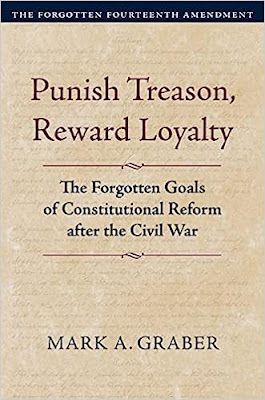
Mark A. Graber, Punish Treason, Reward Loyalty: The Forgotten Goals of Constitutional Reform after the Civil War (University of Kansas Press, 2023)
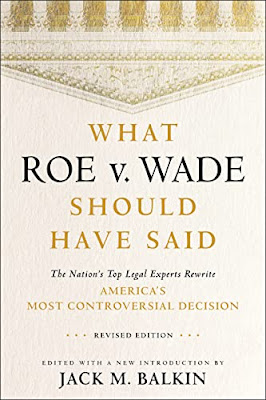
Jack M. Balkin, What Roe v. Wade Should Have Said: The Nation's Top Legal Experts Rewrite America's Most Controversial Decision - Revised Edition (NYU Press, 2023)

Andrew Koppelman, Burning Down the House: How Libertarian Philosophy Was Corrupted by Delusion and Greed (St. Martin’s Press, 2022)

Gerard N. Magliocca, Washington's Heir: The Life of Justice Bushrod Washington (Oxford University Press, 2022)
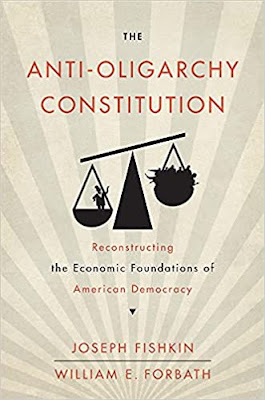
Joseph Fishkin and William E. Forbath, The Anti-Oligarchy Constitution: Reconstructing the Economic Foundations of American Democracy (Harvard University Press, 2022)
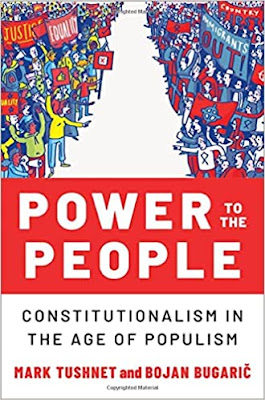
Mark Tushnet and Bojan Bugaric, Power to the People: Constitutionalism in the Age of Populism (Oxford University Press 2021).

Mark Philip Bradley and Mary L. Dudziak, eds., Making the Forever War: Marilyn B. Young on the Culture and Politics of American Militarism Culture and Politics in the Cold War and Beyond (University of Massachusetts Press, 2021).

Jack M. Balkin, What Obergefell v. Hodges Should Have Said: The Nation's Top Legal Experts Rewrite America's Same-Sex Marriage Decision (Yale University Press, 2020)

Frank Pasquale, New Laws of Robotics: Defending Human Expertise in the Age of AI (Belknap Press, 2020)

Jack M. Balkin, The Cycles of Constitutional Time (Oxford University Press, 2020)

Mark Tushnet, Taking Back the Constitution: Activist Judges and the Next Age of American Law (Yale University Press 2020).

Andrew Koppelman, Gay Rights vs. Religious Liberty?: The Unnecessary Conflict (Oxford University Press, 2020)

Ezekiel J Emanuel and Abbe R. Gluck, The Trillion Dollar Revolution: How the Affordable Care Act Transformed Politics, Law, and Health Care in America (PublicAffairs, 2020)

Linda C. McClain, Who's the Bigot?: Learning from Conflicts over Marriage and Civil Rights Law (Oxford University Press, 2020)
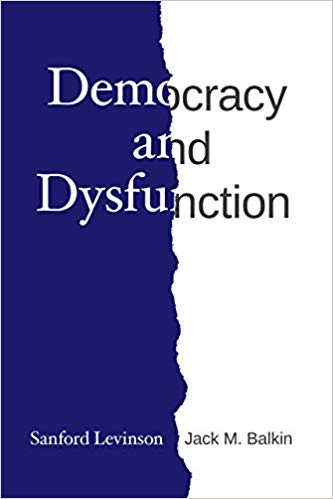
Sanford Levinson and Jack M. Balkin, Democracy and Dysfunction (University of Chicago Press, 2019)

Sanford Levinson, Written in Stone: Public Monuments in Changing Societies (Duke University Press 2018)

Mark A. Graber, Sanford Levinson, and Mark Tushnet, eds., Constitutional Democracy in Crisis? (Oxford University Press 2018)

Gerard Magliocca, The Heart of the Constitution: How the Bill of Rights became the Bill of Rights (Oxford University Press, 2018)

Cynthia Levinson and Sanford Levinson, Fault Lines in the Constitution: The Framers, Their Fights, and the Flaws that Affect Us Today (Peachtree Publishers, 2017)

Brian Z. Tamanaha, A Realistic Theory of Law (Cambridge University Press 2017)

Sanford Levinson, Nullification and Secession in Modern Constitutional Thought (University Press of Kansas 2016)

Sanford Levinson, An Argument Open to All: Reading The Federalist in the 21st Century (Yale University Press 2015)

Stephen M. Griffin, Broken Trust: Dysfunctional Government and Constitutional Reform (University Press of Kansas, 2015)

Frank Pasquale, The Black Box Society: The Secret Algorithms That Control Money and Information (Harvard University Press, 2015)

Bruce Ackerman, We the People, Volume 3: The Civil Rights Revolution (Harvard University Press, 2014)
Balkinization Symposium on We the People, Volume 3: The Civil Rights Revolution

Joseph Fishkin, Bottlenecks: A New Theory of Equal Opportunity (Oxford University Press, 2014)

Mark A. Graber, A New Introduction to American Constitutionalism (Oxford University Press, 2013)

John Mikhail, Elements of Moral Cognition: Rawls' Linguistic Analogy and the Cognitive Science of Moral and Legal Judgment (Cambridge University Press, 2013)

Gerard N. Magliocca, American Founding Son: John Bingham and the Invention of the Fourteenth Amendment (New York University Press, 2013)

Stephen M. Griffin, Long Wars and the Constitution (Harvard University Press, 2013)

Andrew Koppelman, The Tough Luck Constitution and the Assault on Health Care Reform (Oxford University Press, 2013)

James E. Fleming and Linda C. McClain, Ordered Liberty: Rights, Responsibilities, and Virtues (Harvard University Press, 2013)
Balkinization Symposium on Ordered Liberty: Rights, Responsibilities, and Virtues

Andrew Koppelman, Defending American Religious Neutrality (Harvard University Press, 2013)

Brian Z. Tamanaha, Failing Law Schools (University of Chicago Press, 2012)

Sanford Levinson, Framed: America's 51 Constitutions and the Crisis of Governance (Oxford University Press, 2012)

Linda C. McClain and Joanna L. Grossman, Gender Equality: Dimensions of Women's Equal Citizenship (Cambridge University Press, 2012)

Mary Dudziak, War Time: An Idea, Its History, Its Consequences (Oxford University Press, 2012)

Jack M. Balkin, Living Originalism (Harvard University Press, 2011)

Jason Mazzone, Copyfraud and Other Abuses of Intellectual Property Law (Stanford University Press, 2011)

Richard W. Garnett and Andrew Koppelman, First Amendment Stories, (Foundation Press 2011)

Jack M. Balkin, Constitutional Redemption: Political Faith in an Unjust World (Harvard University Press, 2011)

Gerard Magliocca, The Tragedy of William Jennings Bryan: Constitutional Law and the Politics of Backlash (Yale University Press, 2011)

Bernard Harcourt, The Illusion of Free Markets: Punishment and the Myth of Natural Order (Harvard University Press, 2010)

Bruce Ackerman, The Decline and Fall of the American Republic (Harvard University Press, 2010)
Balkinization Symposium on The Decline and Fall of the American Republic

Ian Ayres. Carrots and Sticks: Unlock the Power of Incentives to Get Things Done (Bantam Books, 2010)

Mark Tushnet, Why the Constitution Matters (Yale University Press 2010)
Ian Ayres and Barry Nalebuff: Lifecycle Investing: A New, Safe, and Audacious Way to Improve the Performance of Your Retirement Portfolio (Basic Books, 2010)
.jpg)
Jack M. Balkin, The Laws of Change: I Ching and the Philosophy of Life (2d Edition, Sybil Creek Press 2009)

Brian Z. Tamanaha, Beyond the Formalist-Realist Divide: The Role of Politics in Judging (Princeton University Press 2009)
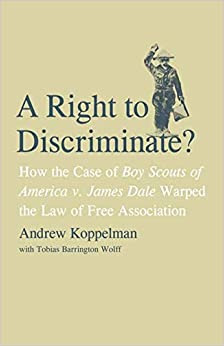
Andrew Koppelman and Tobias Barrington Wolff, A Right to Discriminate?: How the Case of Boy Scouts of America v. James Dale Warped the Law of Free Association (Yale University Press 2009)

Jack M. Balkin and Reva B. Siegel, The Constitution in 2020 (Oxford University Press 2009)
Heather K. Gerken, The Democracy Index: Why Our Election System Is Failing and How to Fix It (Princeton University Press 2009)

Mary Dudziak, Exporting American Dreams: Thurgood Marshall's African Journey (Oxford University Press 2008)

David Luban, Legal Ethics and Human Dignity (Cambridge Univ. Press 2007)

Ian Ayres, Super Crunchers: Why Thinking-By-Numbers is the New Way to be Smart (Bantam 2007)

Jack M. Balkin, James Grimmelmann, Eddan Katz, Nimrod Kozlovski, Shlomit Wagman and Tal Zarsky, eds., Cybercrime: Digital Cops in a Networked Environment (N.Y.U. Press 2007)

Jack M. Balkin and Beth Simone Noveck, The State of Play: Law, Games, and Virtual Worlds (N.Y.U. Press 2006)

Andrew Koppelman, Same Sex, Different States: When Same-Sex Marriages Cross State Lines (Yale University Press 2006)
Brian Tamanaha, Law as a Means to an End (Cambridge University Press 2006)
Sanford Levinson, Our Undemocratic Constitution (Oxford University Press 2006)
Mark Graber, Dred Scott and the Problem of Constitutional Evil (Cambridge University Press 2006)
Jack M. Balkin, ed., What Roe v. Wade Should Have Said (N.Y.U. Press 2005)
Sanford Levinson, ed., Torture: A Collection (Oxford University Press 2004)
Balkin.com homepage
Bibliography
Conlaw.net
Cultural Software
Writings
Opeds
The Information Society Project
BrownvBoard.com
Useful Links
Syllabi and Exams